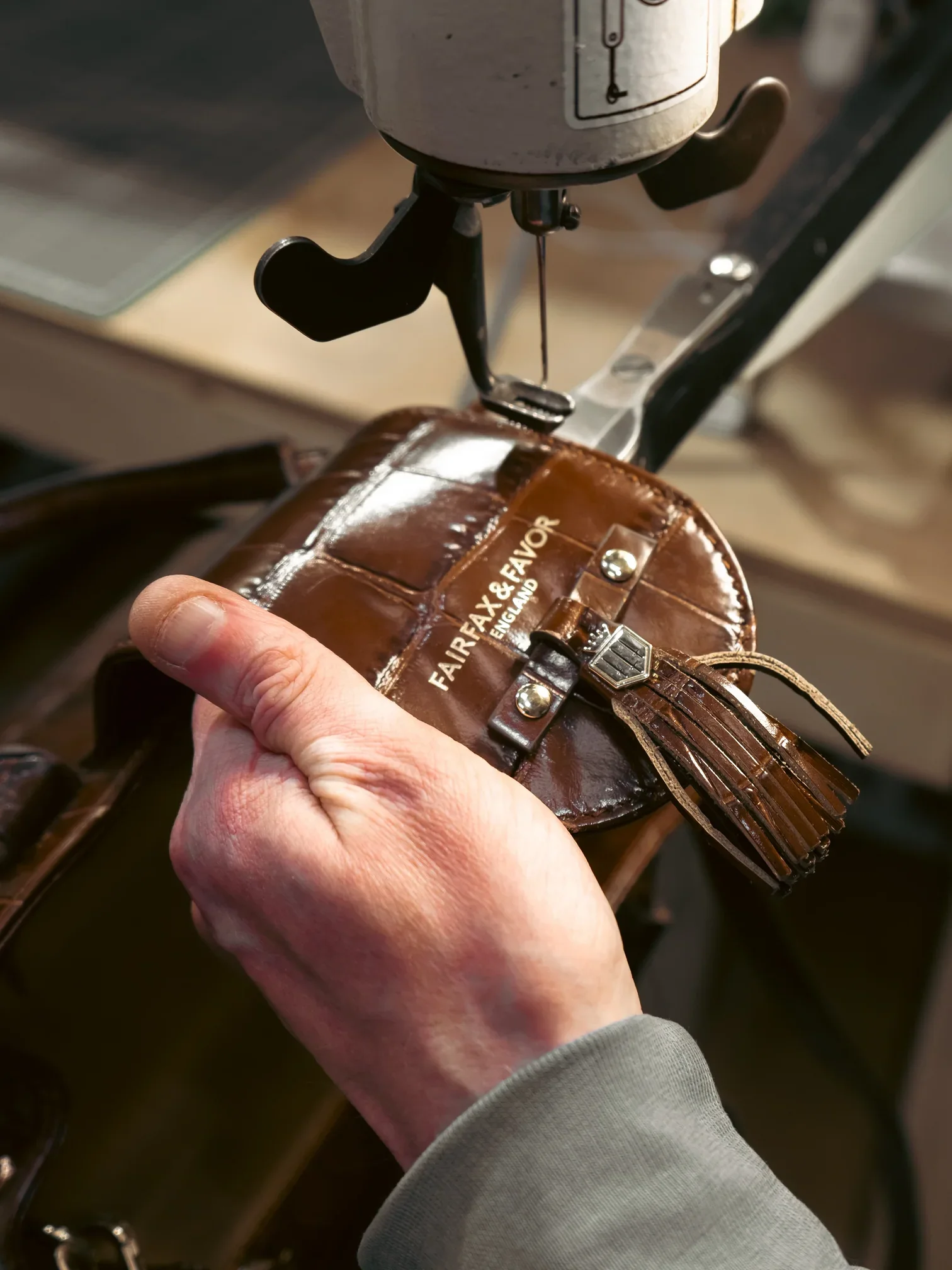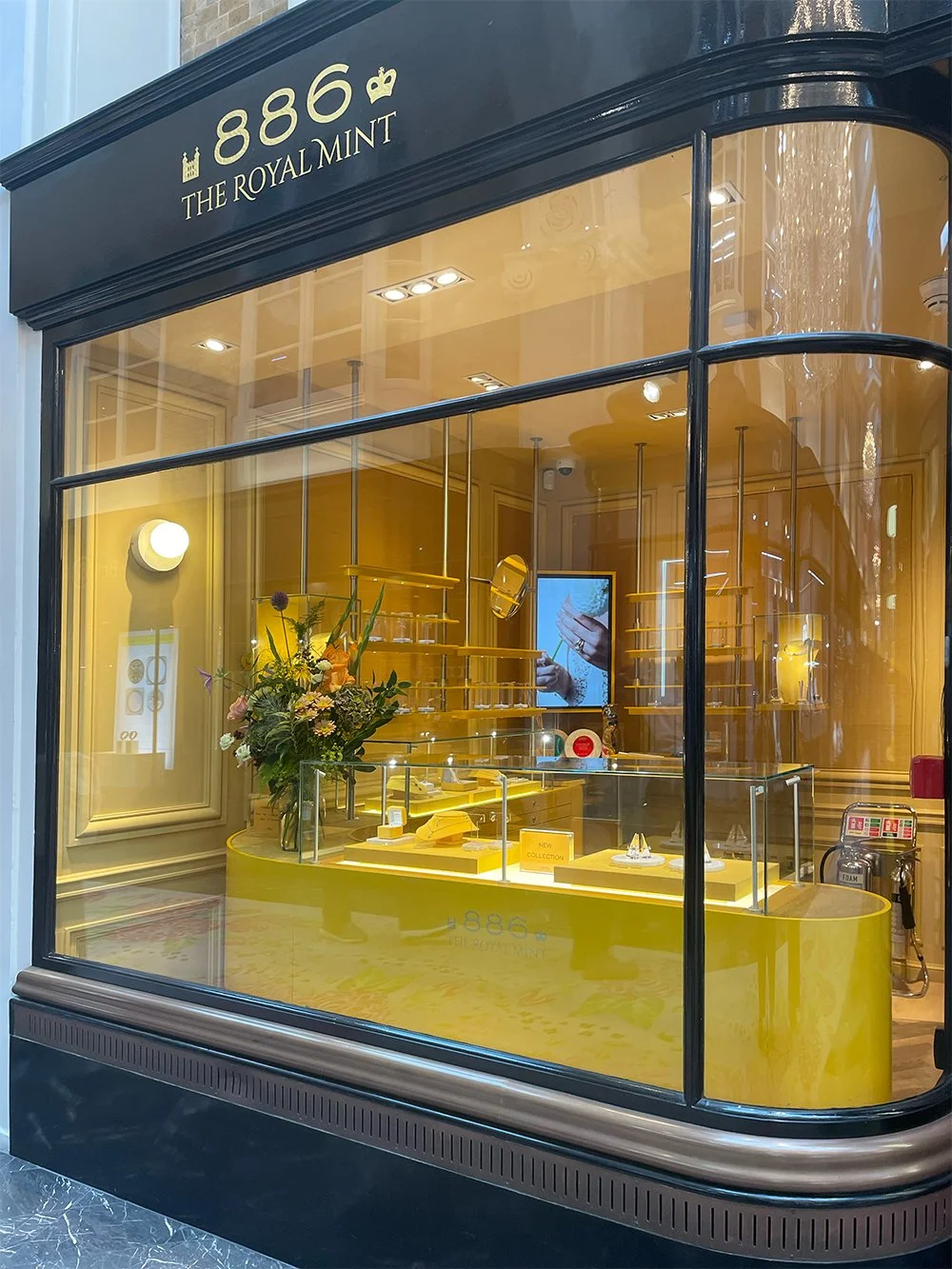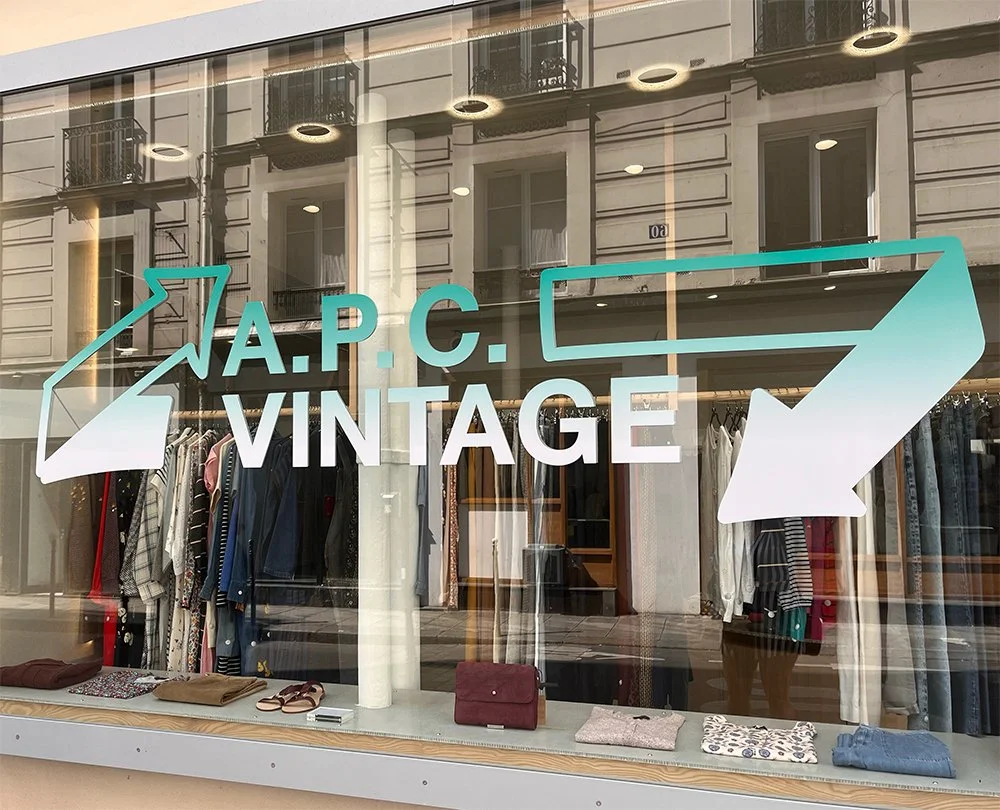INSIGHT
Repair, resell, recycle, the social movement transforming retail design?
Retail’s second life
In recent years, a noticeable shift has taken place in retail, not just in what brands sell and how their stores are designed, but also in how they engage with customers and the services they offer. The demand for sustainability, authenticity and longevity is reshaping the retail landscape.
Two interlinked phenomena are central, the rise of second-hand and pre-loved retail and the growing service provision of repair, resell, and remaking by brands themselves. Together, these shifts are driving a new era of sustainable retail interior design, one that embraces circular retail design principles, encourages reuse, and celebrates materials and spaces with a longer life cycle.
We take a closer look at the reasons behind this movement, the viability of adapting similar sustainable store design strategies, and the knock-on implications this has for the way future retail environments are imagined, built, and experienced.
Refavored represents Fairfax & Favor’s pledge to revive and reuse pre-loved or imperfect shoes rather than letting them go to waste. By restoring and rehoming shoes, Fairfax & Favor supports the circular economy, reduces landfill impact, and keeps their timeless designs in use and appreciated for longer.
Sign of the times
Overconsumption in the fashion world has long been called out for its devastating environmental and social consequences. The idea that ‘buying less’ conflicts with a retail brand's expansion plans is a core tension in the retail industry's shift toward sustainability. Traditional retail growth models are based on increasing sales volume, but a circular economy focuses on making products last longer and reducing consumption.
In an article for Forbes, consumer expert Greg Petro questioned whether the current underconsumption trend might be a “canary in the coal mine,” signalling a potential upcoming recession. Gen Z’s frugality may be getting the spotlight due to its strong presence on social media, but the VML 2025 report data indicates that a broader shift toward more intentional consumption is happening across all generations. Globally, 69% of people say they are consciously trying to buy or own less as a lifestyle choice, a trend that remains consistent across age groups.
Whether driven by financial concerns, sustainability goals, or fatigue with consumer culture, a growing social media movement is challenging overconsumption, as people of all ages look for ways to live with less.
Retailers are increasingly being compelled to move beyond simply talking about sustainability and start taking genuine action. With the secondhand apparel market projected to reach $350 billion by 2027 in the US and the UK market expected to more than triple in value by 2031, tapping into this space presents a highly profitable opportunity. The following examples demonstrate that growth doesn’t have to depend solely on selling more new products.
PAST, a re-use concept by Norwegian brand Livid. The concept combines vintage, long-lasting items with repaired and repurposed garments, all supported by a factory workshop offering repair and upcycling services.
Royal Mint 886
886 by The Royal Mint is redefining sustainable luxury retail as the first jewellery brand to create a fully traceable supply of e-waste gold, sourced and manufactured entirely in the UK. In partnership with the Betts Metals Group, the brand also pioneers the use of X-Ray Silver, refined from medical X-ray films recovered from UK and Irish hospitals. The boutique’s interior design embodies understated elegance and reflects the brand’s heritage, craftsmanship, and commitment to sustainability. Bright, bold yet elegantly simple yellow fixtures provide a refined backdrop that mirrors the sophistication of the jewellery itself. The space offers an effortlessly chic environment where customers can explore and experience the handcrafted jewellery collections up close.
886 Royal Mint, a beautiful expression of understated luxury and circular design, showcased within the iconic Burlington Arcade.
H&M
H&M’s “Pre-Loved” concept is now part of its UK offering, for instance, in its Regent Street flagship, a section devoted to second-hand items from various brands and designers is curated alongside their new lines. They also operate ‘Take Care’ initiatives: repair, care, customisation, and reselling (through their ownership of Sellpy) are embedded in their strategy. As a result, their store designs are evolving accordingly with sustainable materials, reused furnishings, installations that feel more like lifestyle spaces. The aesthetic of the refurbished Regent Street Home concept store, for example, includes reused furniture from its old layout, softer palettes with stone textures and design touches to create a more elegant vibe.
H&M’s Pre-loved zone in Regent Street, London
Veja
Veja has opened stores with built-in repair / workshop spaces in such as in Covent Garden shown below. The ‘Clean, Repair, Collect’ initiative programme, aims to extend the lifespan of footwear and promote a circular economy. Veja co-founder Sébastien Kopp has noted that many shoes are thrown away unnecessarily. He launched the cobbler project with the belief that "the most sustainable thing you can do is wear the sneakers you already own". The popular programme has repaired tens of thousands of pairs of shoes since its inception. In their covent garden store the repair workshop (for shoes and clothing) occupies a prime window space. The entire store interior is intentionally raw and unfinished with visible structural components, to reinforce the repair and reuse ethos. This isn’t just functional but symbolic, the very space tells a story of reuse, of wabi-sabi beauty in what remains.
Veja repair in Covent Garden, London
Nudie Jeans
This is another great example of a brand using their stores as a service point for repairing and adapting, a key part of its strategy for circular and sustainable fashion. The company offers free, unlimited repairs on any pair of Nudie Jeans, regardless of when or where they were purchased. The repair station is very prominent and visible, complete with a sewing machine and is often the centrepiece of the store, visible from the street to clearly communicate the brand's repair service.
Nudie Jeans, London
Eftir, Oslo
Eftir’s interior design reflects its high-end compelling retail concept with a clean, chic and luxurious overall aesthetic. It’s a strong contrast to the typical jam-packed vintage shop experience with its elevated preloved product curation of beautifully presented clothes, accessories and furniture. It shows how independent shops can succeed by creating thoughtfully designed, distinctive interior spaces that stand out amid the growing presence of mainstream brands in the second-hand market.
Eftir in Oslo
What this means for store design
These changes aren’t just about adding a repair corner or a pre-loved rack. They are pushing store design in new directions, in ways that reflect both function and values. Here are some of the implications:
1. Store layout
Retail spaces are being reimagined with specific zones for second-hand/pre-loved, repair, customisation. These zones often need different lighting, fixtures, tools, workbench-style areas, displays that tell stories of reuse. They also tend to be more open where customers can see repair workshops, machines or see parts of the process. This transparency builds trust and connection.
2. Materiality & aesthetic
Reuse of existing store furniture and fittings (or repurposed materials and reducing waste in retail fit-outs) is increasingly common. Old shelving, lighting fixtures, furniture might be refurbished rather than replaced. The finishes tend toward natural, raw and seemingly unfinished. Exposed structural elements, visible craftsmanship, rougher textures.
3. Customer experience & social spaces
These stores are less transactional and more experiential. Customers are invited to linger, explore, see behind the scenes (repair work, upcycling). A store becomes also a social or educational space. Services like monogramming, personalisation, or visible workshops foster a sense of ownership and care. Store designs therefore include display of tools, work areas, or visual storytelling about the lifecycle of products.
4. Signage and storytelling
Signs and displays that explain the story, how something was repaired, or how items were chosen or restored are very important in this type of space. Digital elements integrated such as smart screens for fitting rooms that might show item history, or that guide customers through repair or care.
Signage at Nudie Jeans
Projection mapping table at Hotter Shoes
The challenges
H&M's preloved concept, primarily operated through its majority-owned subsidiary Sellpy, is not yet financially successful on its own and this struggle for profitability is not unique to H&M's venture. The secondhand clothing market, while booming, has been challenging for many retailers to make profitable. As of early 2024, the BBC reported that despite rapid growth, many players in the resale market, including larger companies, were not turning a profit.
Scalability: It’s easier to run a repair corner in one store than to scale that to hundreds. Artisan labour, quality, turnaround times, cost - all are hard to maintain at scale.
Perception & stigma: Even though ‘pre-loved’ is being reframed, some consumers still carry stigma around used items (concerns about condition, hygiene, style). Store design and presentation need to counter those through elevated displays and storytelling.
Cost vs price: Repairing or upcycling often costs more than people expect; how to price fairly / transparently while keeping things accessible.
Maintenance of repair infrastructure: Tools, skilled labour, supply of parts, all need ongoing investment.
APC Vintage store in Paris with its minimalist mix of natural and industrial materials.
Despite these challenges, programmes such as Patagonia’s Worn Wear are considered success stories. It combines trade-ins, resale, and repair services, including free in-store and mobile repairs, encouraging customers to stay within the Patagonia ecosystem. While revenue from the Worn Wear platform was around $5 million in 2021, the company's overall revenue is in the billions. The repair and resale operations extend the product lifecycle and generate new revenue from used products, proving that sustainability and profitability can coexist. And its impact on the store design cannot be ignored with its dedicated prominent space allocation to its second-hand and repair services creating an authentic ‘workshop-in-view’ atmosphere that reinforces the brand's core values of durability and sustainability.
The Worn Wear philosophy also turns the store into a community hub, where stories and photos from customers celebrating their ‘beloved’ gear are woven into the displays. This approach shifts the focus from simply selling used items to celebrating the histories behind each product, turning what could be seen as secondhand into something cherished. It’s a bit like that Friends episode where Phoebe prefers furniture with character and a story over brand-new pieces, the value isn’t just in the item itself, but in the experiences and memories it carries.
What’s coming next?
Looking ahead, the next phase of circular retail design will likely go beyond simply selling or repairing products or using recycled materials in sustainable store designs. More brands might dedicate entire stores to resale and repair, while digital tools increasingly complement in-store services, from scheduling repairs to visualising restored or bespoke items. Workshop spaces are likely to become more popular, turning interiors into storytelling tools. Stores as community hubs are already on the rise, offering workshops, events, and educational spaces that foster customer loyalty. Taken together, these trends suggest circular retail could become more experiential, successful and connected, with circularity embedded at the heart of brand growth.
While circularity will require extensive organisational changes, it is clear that the successful brands will be those that make storytelling and memory-making central to the in-store experience, where every corner, display, and material choice reflects a product’s journey and the values behind it. If you want to bring this vision to life, our London based retail design agency can help you create spaces that inspire, engage, and turn this sustainability movement into a compelling brand experience.

















